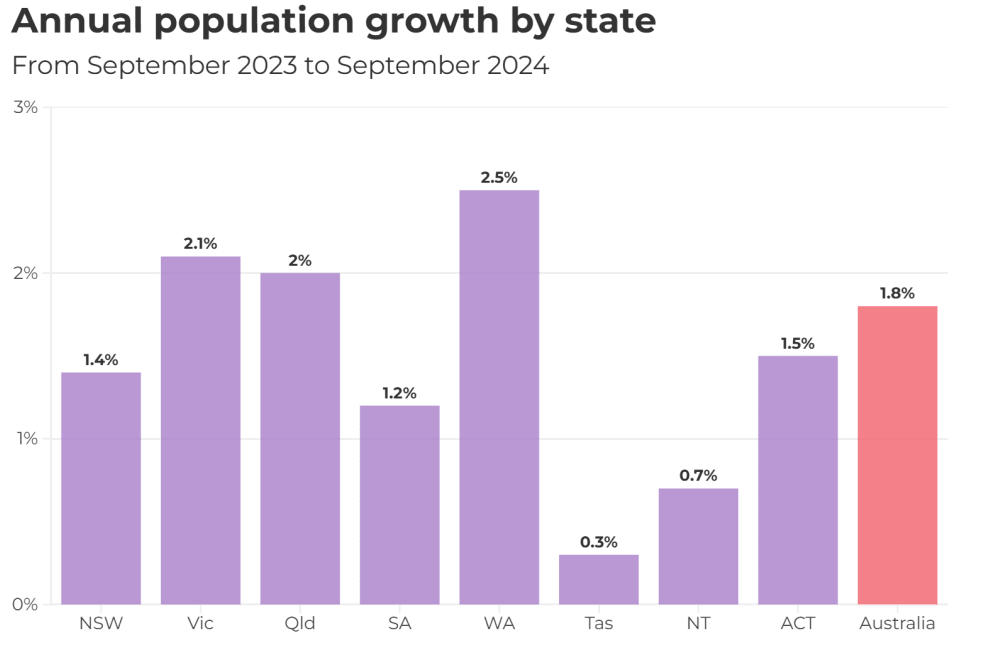Why a state's property prices are significantly impacted by rapid population rise
One state’s notable population growth is contributing to the nation’s highest home price increases, but it’s not the only factor at work. In recent years, Australia’s rapid population expansion has contributed to rising housing prices across the country. Australia’s population increased by 1.8% between September 2023 and September 2024, according to new demographic figures released by the Australian Bureau of Statistics for the country, states, and territories. Western Australia experienced the largest rate of population increase of any state, however, Victoria and Queensland experienced faster rates than the national average.

At the capital city level, this was also noticeable, as Perth’s population grew by 3.2% between June 2023 and June 2024, surpassing that of all other cities. This spike was caused by both net interstate and net overseas migration, with Western Australia lagging behind only Queensland in interstate migration statistics.
Although the state’s growing population is contributing to economic expansion, it has also affected housing demand and pricing generally. When we examine the yearly increases in housing prices in Perth and Regional Western Australia, this becomes clear. Prices increased at the fastest rates—11.5% and 11.9%, respectively—when compared to all other cities and areas in the nation.
- A contributing factor to migration to Western Australia is the comparatively high cost of real estate in the region. In recent years, the median property values in the majority of our larger states have been lower.
- In late 2021, after the third-highest price peak in history, the median home value in Perth was still only $514,000, compared to $988,000, $782,000, and $585,000 for median homes in Sydney, Melbourne, and Brisbane, respectively.
- Except for Regional SA, the median value of homes in Regional WA was lower than that of all other regional areas.
- Home prices in the state have increased significantly since 2021 due to affordability and other things, including job possibilities, but they are still lower than in most other states.

Conclusion
In Western Australia, rapid population growth may be pushing up housing prices, but it’s also critical to take supply into account. According to recent completions data, the most notable shortfall in the number of homes being constructed has occurred in Washington. New housing construction is currently 52% behind population growth. The state is facing a more serious housing crisis than the nation as a whole, which is indicated by the fact that this is significantly higher than the 28% national gap. Population growth and a spike in investor activity have caused WA’s housing demand to rise continuously, but supply has not kept up with demand. Further increases in property prices are anticipated if these trends continue.
